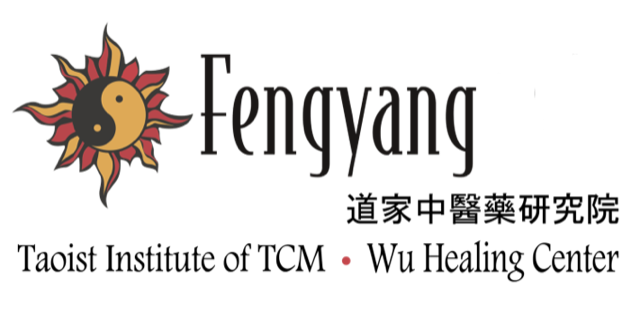Classic TCM Formula: Four-Substances Decoction (Si Wu Tang)
四物湯 Four-Substances Decoction
Source: Imperial Grace Formulary of the Tai Ping Era (Tai ping hui min he ji ju fang)
Radix Rehmanniae Glutinosae Conquitae
(shu di huang)...................................................... (9-21g)
Radix Paeoniae Lactiflorae (bai shao)............... (9-15g)
Radix Angelicae Sinensis (dang gui)................. (9-12g)
Radix Ligustici Chuanxiong (chuan xiong)........ (3-6g)
Preparation: The source text advises to coarsely grind equal amounts of the ingredients and take in 9g doses as a draft before meals. Today it is usually prepared as a decoction with the dosage specified in parentheses. Available in prepared form.
Actions: Tonifies the blood and regulates the Liver.
INDICATIONS: Dizziness, blurred vision, lusterless complexion and nails, generalized muscle tension, irregular menstruation with little flow or amenorrhea, periumbilical and lower abdominal pain, a pale t9ngue, and a thin and wiry or thin and choppy pulse. Also used for menorrhagia, hard abdominal masses with recurrent pain, restless fetus disorder, or lochioschesis with a firm and painful abdomen and sporadic fever and chills.
This is blood deficiency, primarily of the Liver. When the Liver blood is deficient it is unable to rise and supply nourishment to the head. This manifests as dizziness and a lusterless complexion. The Liver's ability to supply its associated sensory organ (eyes) and tissue (sinews) is also impaired, which leads to blurred vision or chronic eye strain and generalized muscle tension. The health of the Liver is reflected in the nails; when the Liver blood is deficient, the nails become soft, dry, and lusterless (described as being 'wretched').
A normal menstrual cycle depends on the Liver to provide and shut off the flow of blood at the appropriate times. When the Liver blood is deficient, the menses are typically irregular with a scanty flow. There may even be amenorrhea. However, when the blood becomes disordered, menorrhagia may occur. When the blood is deficient it does not move well, and there is a tendency for blood stasis to develop. This commonly manifests as periumbilical and lower abdominal pain, often occurring at the onset of menstruation, which is due to stasis and insufficiency of blood in the womb. This same process can also lead to hard abdominal masses with recurrent pain, restless fetus, or lochioschesis.
The Heart is also dependent on the Liver blood; when it is deficient, one may experience palpitations. The pale tongue reflects blood deficiency, as does the thin pulse. The wiry or choppy quality of the pulse, which almost always accompanies this condition, signals the stasis of blood and demonstrates the link between blood deficiency and stasis.
ANALYSIS OF FORMULA: This formula consists of two groups of herbs. The 'blood of the blood' herbs
directly tonify the blood. The first of these, Radix Rehmanniae Glutinosae Conquitae (shu di huang), has a very strong tonifying effect on the Liv r and Kidneys and is said to nourish the yin of the blood. It is therefore particularly effective in treating problems with menstruation, conception, and birth. Radix Paeoniae Lactiflorae (bai shao) tonifies the blood and preserves the yin. In concert with Radix Rehmanniae Glutinosae Conquitae (shu di huang), it provides a strong tonic for the Liver blood. However, because these two herbs are rich and cloying in nature, there is a risk that their use will aggravate the stasis of blood. This risk is prevented by the second group of herbs, which treat problems with the 'qi of the blood.'
Radix Angelicae Sinensis (dang gui) tonifies and invigorates the blood and is therefore said to nourish the yang of the blood. It also moistens the Intestines and regulates the relationship between the Liver and Kidneys. Radix Ligustici Chuanxiong (chuan xiong) primarily acts to invigorate the blood and promote the movement of qi. It thereby releases areas of constraint (particularly the Liver) and alleviates pain. The com bination of these herbs with the first group facilitates the production of blood. At the same time, the ability of Radix Paeoniae Lactiflorae (bai shao) to preserve the yin prevents the aromatic nature of these two herbs from injuring the yin.
If the blood-deficiency aspect of the presentation is predominant, the dosage of the first group of herbs should be increased. Conversely, if blood stasis is predominant, the dosage of the second group should be increased. For this reason, the hierarchy of ingre dients will change depending on the condition.
COMMENTARY: This is the basic for ula fortonify ing the blood and regulati g. menstruation, for which it is very effective. It can be used (with appropriate modification) in treating a wide variety of problems associated with menstruation or birth in which the nails are lusterless, the tongue is' pale, and the pulse is thin. It hasmany derivatives, some of which are listed under the variations and associated formulas be ow, as well as Eight-Treasure Decoction (ba zhen tang), which is discussed in the following section.
With the appropriate presentation, this formula may be used in treating such biomedically-defined disorders as primary dysmenorrhea, irregular menstruation, anemia of various etiologies, threatened miscarriage, post partum weakness, insufficient lacta tion, urticaria, and neurogenic headache.
CAUTIONS & CONTRAINDICATIONS: This formula is appropriate for chronic conditions which are not too severe. It should not be used in treating acute, severe blood loss or other problems of blood deficiency which include severe weakness and labored breathing· In such cases one should heed the adage; '' For exhaustion of blood, tonify the qi;'' a formula such as Tangkuei Decoction to Tonify the blood (dang gui bu xue tang) should be used instead. Furthermore, if this formula is used in treating patients who have a constitutional deficiency of Spleen yang with a poor appetite and loose stools, it should be modified to include herbs which strengthen the middle burner.
Reference:
Chinese Herbal Medicine Formulas and Strategies by Dan Bensky and Randall Barolet

